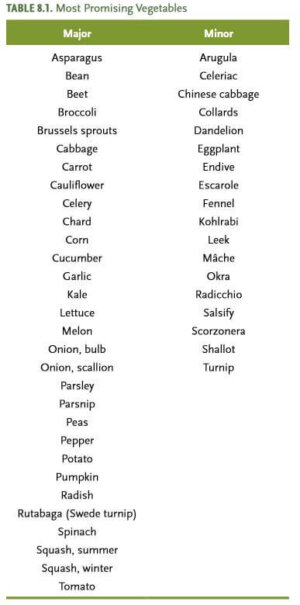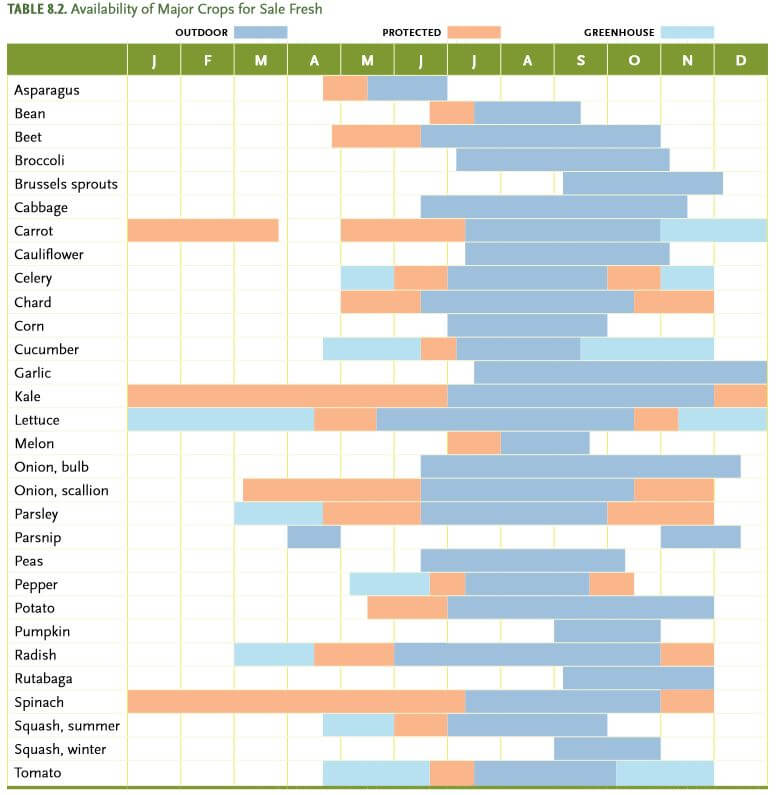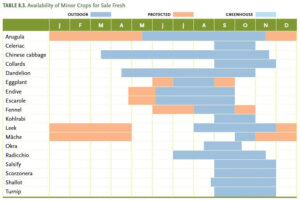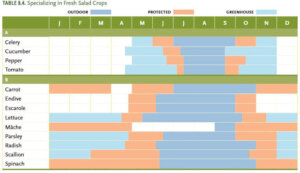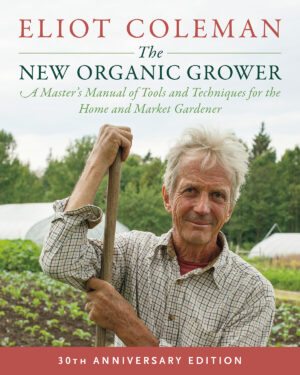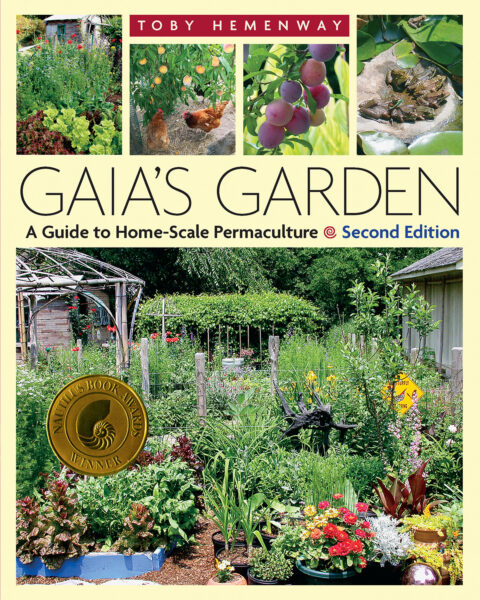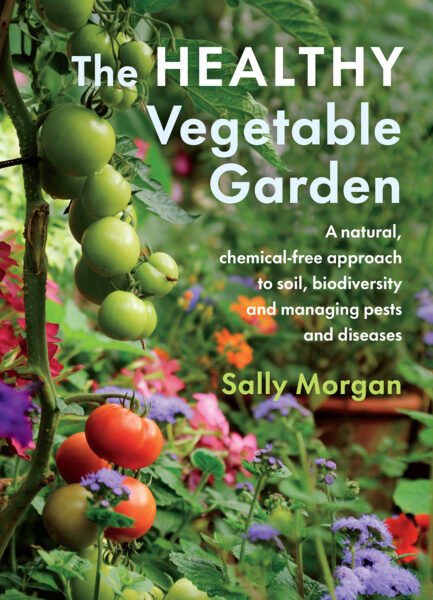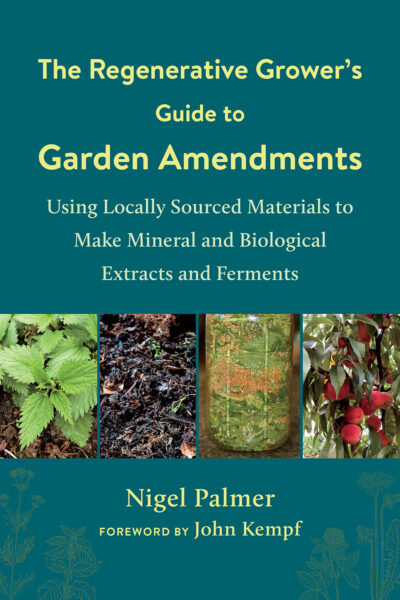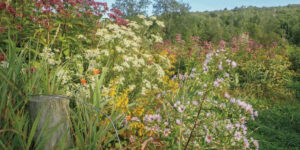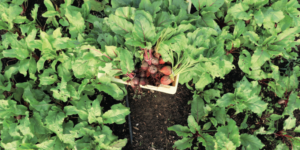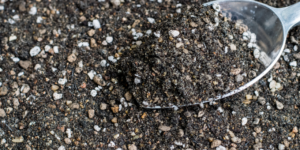Garden Planning: The Most Promising Veggies
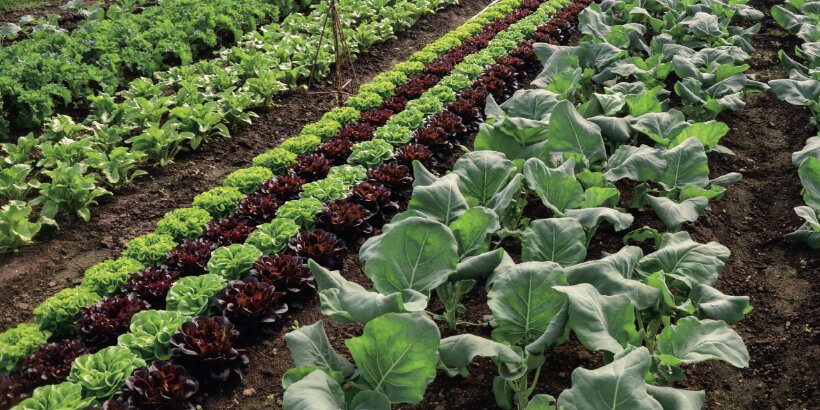
Getting ready to do some garden planning? Here are some of the most promising veggies that Eliot Coleman suggests to start with!
The following is an excerpt from The New Organic Grower by Eliot Coleman. It has been adapted for the web.
A Guide to Garden Planning
When I began farming full-time on my own land in Maine, I was extremely fortunate to have as friends and neighbors Scott and Helen Nearing.
The Nearings taught me a wide range of economic survival skills, but the most important were planning and observation. The Nearings demonstrated those two valuable skills at their best.
They were careful planners and organizers of the work to be done and the crops to be grown and always sought out the most efficient way to accomplish any task at hand. They were without a doubt the most practically organized country people I have ever met.
In fact, I remember marveling that Scott was the one nonagenarian I knew with plans for the future farm project he would be working on ten years hence.
Many of Helen and Scott’s ideas and experiences as small farmers are described in their book Living the Good Life (Harborside, ME: Social Science Institute, 1954; reprinted, New York: Schocken, 1970).
Planning on Paper
I soon learned to plan ahead much more efficiently than I ever had—to set out the whole year’s work on paper during the winter months and thus have a good grasp well in advance of what resources I might need, where they could come from, how I would acquire them, and how much time I might allot to each task.
I organized a notebook into sections for each vegetable crop, for every year in the different rotations I was trying out, for fertilization records on each field, and so forth.
There is no way to match the value of organizing and planning beforehand.
The Nearings were masters of observation. They meticulously recorded all the bits and pieces of data gleaned out of day-to-day farm activities—from which variety of lettuce wintered over best to what combination of ingredients made the most effective compost for peas.
Some of their observations came from intentional comparative trials, but the majority came by chance—from keeping their eyes open and training themselves to notice subtle differences, where less perceptive observers would pass by unaware.
In short, they never stopped learning and were wise enough to record what they noticed so it would be of use to them in the future.
Taking a cue from the Nearings, the first step, therefore, is to plan out your operation in detail. Let’s go through this process step by step to figure out which crops to grow, in what quantities, and how to set it all up.
What to Grow
Depending on the market and the climate in your area, the possibility exists to grow anywhere from 1 to 70 or so reasonably common vegetable crops.
Imaginative growers are rediscovering old crops every day. John Evelyn in his 1699 essay “Acetaria: A Discourse of Sallets” listed 77 vegetable crops, and those were just salad ingredients.
The 48 vegetables I consider the most promising are listed in table 8.1 and are divided into two categories, major and minor.
One way to begin deciding which vegetables to grow is to write down in chart form any information that will help organize your planning. For example, I might begin by compiling a chart of the months when different vegetables could be available for sale if they were grown in my area.
That chart should include the potential for extended availability of these crops if the growing season is supplemented by the protection of walk-in tunnels, the greater protection of a heated greenhouse, or out-of-season sales from a storage building.
Charts of the potential availability of crops for sale in my area, New England, might look like tables 8.2, 8.3, and 8.4.
Then, depending on whether I wanted to grow just seasonally or for an extended market, I would have an idea which crops could be available and when.
The advantage of compiling this kind of information is that it stimulates thinking. It might suggest a specific course of action, such as a degree of specialization, perhaps.
A wide variety of crops can be made available year-round.
In many markets year-round production can help keep customers or acquire restaurant contracts.
The “A” crops in table 8.4 are the most potentially lucrative for the grower, but they are also the most expensive to produce. They need higher temperatures, requiring more heating costs and a more professional greenhouse, one that is taller and stronger for trellising.
They also are not actually year-round crops, although they are long-season. Only the most specialized producers plan on harvesting before April and after November.
The “B” crops can be grown in simpler tunnel greenhouses at lower temperatures.
Some, such as mâche, parsley, scallions, spinach, and carrots, can be grown as fall crops with no supplementary heat at all.
They can be harvested all at once before real cold sets in, or over a good part of the winter by providing just enough heat to keep them from freezing. The decision depends on your market.
The most basic year-round greenhouse crop is lettuce. It is always in demand. Excellent varieties for winter production are available through the specialty seed catalogs. If you use an adapted variety, you can grow lettuce at low temperatures and plan winter harvesting on a regular schedule.
Production Size
This is a function of a number of other factors. How much land is available? How fertile is it? How many workers are involved? What kind of equipment is on hand?
As I said earlier, I consider 11/2 to 2 acres (6,070 to 8,095 square meters) of intensive production to be ideal. The decision about the size of a productive farm cannot be made in a vacuum.
The relationship of size to all of the production and marketing factors must never be forgotten.
The market-garden layout will obviously be determined by the lay of the land, but in addition there are some general suggestions that are applicable almost everywhere.
Subdivision
No matter what size the field, it should be subdivided. One-hundred-foot-long (30 meter) sections are an efficient size for the scale of machinery to be used.
A 5-acre (2 hectares) field, sectioned off, might look like this:
Ideally, the field will slope to the south. The beds run across the field. Each bed is 100 feet (30 meters) long.
The spaces between the sections, which allow for access and turning a walking tractor/tiller at the end of each row, are 10 feet (3 meters) wide.
There are some solid reasons for subdividing. Ease of access, of calculating input and production information, and of general organization are just a few.
The most important reason is management.
Subdivision makes it easy to keep an eye on everything. Care is the key, and nothing must be neglected. Subdivision helps to get you and your attention to every part of the operation.
The crop that could easily be forgotten in the middle of a large field is more likely to receive care in a smaller space. No matter what the shape of the growing area, it should somehow be divided into workable sections.
Layout and Crop Spacing
The divisions above must now be progressively subdivided again. Just as a country is easier to comprehend when it is divided into states, counties, and towns, a garden is more comprehensible as sections and strips and rows.
Each section is 100 feet (30 meters) by 30 feet (10 meters), or 1/14 of an acre (285 square meters). A bed is a part of a section 100 feet long by 30 inches (75 centimeters) wide. That creates 8 (30-inch) beds side by side in each section.
Foot traffic should be confined to the access paths between the beds in order to avoid soil compaction in the growing area.
Thinking in terms of beds helps to make the production system more flexible.
Any bed can be planted after harvest to a succession crop or to a green manure independently of the rest of the section.
One useful hint: When you’re tilling across a sloped field using a walking tractor, start at the uphill edge of the area to be tilled.
Then, as you till the second and subsequent passes, it will be the upper wheels that sink slightly in the softened soil, creating a leveling and slightly terraced effect to the field.
If you start at the bottom edge, this effect is reversed, and the tilt of the field is increased by the sinking wheels. It becomes harder to keep the tractor in line and to keep the field surface even.
For an operation specializing in salads I recommend a walking tractor with a 30-inch tiller and the wheels set on 42-inch (105 centimeter) centers.
You can then till the 30-inch-wide growing area in one pass.
The 12-inch (30 centimeter) access paths are cultivated with the 12-inch knife on the wheel hoe.
I began using 30-inch-wide beds separated by a 12-inch path years ago for certain greenhouse crops, and I soon adapted it to the field.
I find it especially suitable when specializing in multicrop, fresh salad production where I am doing a lot of multiple harvests of low-growing crops and I need to be able to quickly move across the field.
It is easy to step across a 30-inch-wide growing area, and you can straddle it comfortably if you wish while harvesting or transplanting.
Recommended Reads
Recent Articles
Picture-perfect farms may be aesthetically pleasing, but they’re likely lacking in biodiversity. Rewilding practices allow the land to return to its natural wild state, providing more room for fruit-bearing plants to grow and animals to control small pests. The following is an excerpt from Farming on the Wild Side by Nancy J. Hayden and John…
Read MoreLet’s drop the beet! Beets can be grown year-round and are a perfect, flavorful addition to meals. Get started on growing your own no-till beets with help from these tips! The following is an excerpt from The Living Soil Handbook by Jesse Frost. It has a been adapted for the web. How to Grow No-Till…
Read MoreHow do you control bugs & pests on your fruit trees without using harmful sprays and treatments? Here are some tips for identifying insects on fruit trees and controlling them organically. The following is an excerpt from The Holistic Orchard by Michael Phillips. It has been adapted for the web. Finding Insects On Fruit Trees…
Read MoreLooking for ways to naturally enrich your garden? The answer is all around you….literally. Add local rocks & soil to your garden to improve soil health and see your crops flourishing in no time. The following is an excerpt from The Regenerative Grower’s Guide to Garden Amendments by Nigel Palmer. It has been adapted for the…
Read MoreGarden strawberries are excellent for both covering the ground and for growing fruit. If you’re planning out a forest garden, or are just looking for a plant to use as ground cover, strawberries are a great option. The following is an excerpt from The Home-Scale Forest Garden by Dani Baker. It has been adapted for…
Read More

